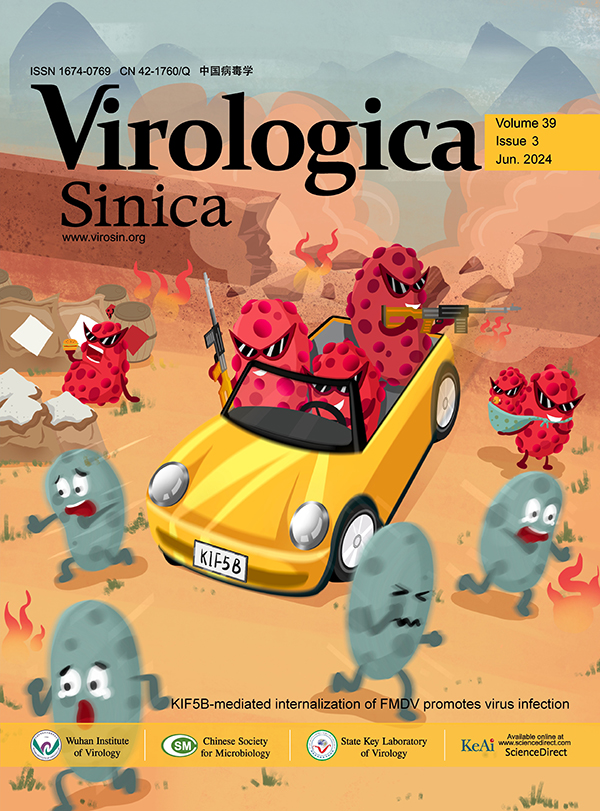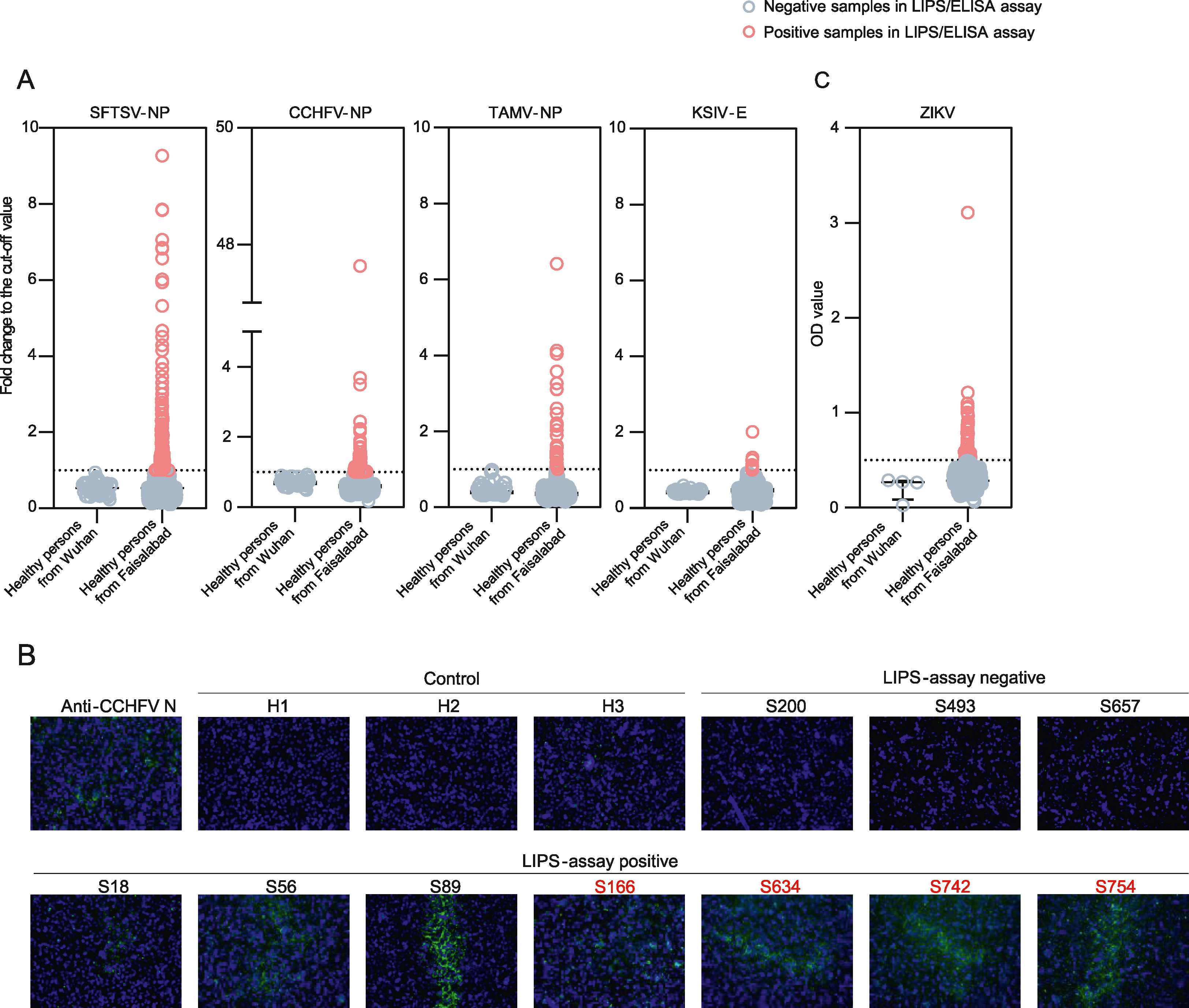-
Atif, M., Saqib, A., Ikram, R., Sarwar, M.R.,Scahill, S., 2017. The reasons why Pakistan might be at high risk of Crimean Congo haemorrhagic fever epidemic; a scoping review of the literature. Virol J, 14, 63.
-
Awan, U.A., Zahoor, S., Ayub, A., Ahmed, H., Aftab, N.,Afzal, M.S., 2021. COVID-19 and arboviral diseases: Another challenge for Pakistan's dilapidated healthcare system. J Med Virol, 93, 4065-4067.
-
Badar, N., Salman, M., Ansari, J., Aamir, U., Alam, M.M., Arshad, Y., Mushtaq, N., Ikram, A.,Qazi, J., 2020. Emergence of Chikungunya Virus, Pakistan, 2016-2017. Emerg Infect Dis, 26, 307-310.
-
Bai, Y., Zhang, Y., Su, Z., Tang, S., Wang, J., Wu, Q., Yang, J., Moming, A., Zhang, Y., Bell-Sakyi, L., Sun, S., Shen, S.,Deng, F., 2022. Discovery of Tick-Borne Karshi Virus Implies Misinterpretation of the Tick-Borne Encephalitis Virus Seroprevalence in Northwest China. Frontiers in Microbiology, 13.
-
Begum, F., Wisseman Cl, J.,Casals, J., 1970a. Tick-borne viruses of West Pakistan. 3. Dera Ghazi Khan virus, a new agent isolated from Hyalomma dromedarii ticks in the D. G. Khan District of West Pakistan. Am J Epidemiol., 92(3), 195-196.
-
Begum, F., Wisseman Cl, J.,Traub, R., 1970b. Tick-borne viruses of West Pakistan. I. Isolation and general characteristics. Am J Epidemiol., 92(3), 180-191.
-
Burbelo, P.D., Chaturvedi, A., Notkins, A.L.,Gunti, S., 2019. Luciferase-Based Detection of Antibodies for the Diagnosis of HPV-Associated Head and Neck Squamous Cell Carcinoma. Diagnostics (Basel), 9.
-
Butt, A.M., Siddique, S., Gardner, L.M., Sarkar, S., Lancelot, R.,Qamar, R., 2016. Zika virus in Pakistan: the tip of the iceberg? The Lancet Global Health, 4, e913-e914.
-
Butt, M.H., Safdar, A., Amir, A., Zaman, M., Ahmad, A., Saleem, R.T., Misbah, S., Khan, Y.H.,Mallhi, T.H., 2021. Arboviral diseases and COVID-19 coincidence: Challenges for Pakistan's derelict healthcare system. J Med Virol, 93, 6465-6467.
-
Chen, S., Xu, M., Wu, X., Bai, Y., Shi, J., Zhou, M., Wu, Q., Tang, S., Deng, F., Qin, B.,Shen, S., 2022. A new luciferase immunoprecipitation system assay provided serological evidence for missed diagnosis of severe fever with thrombocytopenia syndrome. Virol Sin, 37, 107-114.
-
Dai, S., Zhang, T., Zhang, Y., Wang, H.,Deng, F., 2018a. Zika Virus Baculovirus-Expressed Virus-Like Particles Induce Neutralizing Antibodies in Mice. Virol Sin, 33, 213-226.
-
Dai, S., Zhang, Y., Zhang, T., Zhang, B., Wang, H.,Deng, F., 2018b. Establishment of Baculovirus-Expressed VLPs Induced Syncytial Formation Assay for Flavivirus Antiviral Screening. Viruses, 10.
-
Darwish, M., Hoogstraal, H., Roberts, T., Ahmed, I.,Omar, F., 1983. A sero-epidemiological survey for certain arboviruses (Togaviridae) in Pakistan. Trans R Soc Trop Med Hyg, 77, 442-445.
-
Darwish. Ma, Hoogstraal. H, Roberts. Tj, Ghazi. R,Amer. T, 1983. A sero-epidemiological survey for Bunyaviridae and certain other arboviruses in Pakistan. Trans R Soc Trop Med Hyg, 77(4), 446-450.
-
Fazal, O.,Hotez, P.J., 2020. NTDs in the age of urbanization, climate change, and conflict: Karachi, Pakistan as a case study. PLoS Negl Trop Dis, 14, e0008791.
-
Guo, R., Shen, S., Zhang, Y., Shi, J., Su, Z., Liu, D., Liu, J., Yang, J., Wang, Q., Hu, Z., Zhang, Y.,Deng, F., 2017. A new strain of Crimean-Congo hemorrhagic fever virus isolated from Xinjiang, China. Virol Sin, 32, 80-88.
-
Heymann, D.L., Hodgson, A., Sall, A.A., Freedman, D.O., Staples, J.E., Althabe, F., Baruah, K., Mahmud, G., Kandun, N., Vasconcelos, P.F.C., Bino, S.,Menon, K.U., 2016. Zika virus and microcephaly: why is this situation a PHEIC? The Lancet, 387, 719-721.
-
Huang, D., Jiang, Y., Liu, X., Wang, B., Shi, J., Su, Z., Wang, H., Wang, T., Tang, S., Liu, H., Hu, Z., Deng, F.,Shen, S., 2017. A Cluster of Symptomatic and Asymptomatic Infections of Severe Fever with Thrombocytopenia Syndrome Caused by Person-to-Person Transmission. Am J Trop Med Hyg, 97, 396-402.
-
Khan, M.A., Imtiaz, K., Shafaq, H., Farooqi, J., Hassan, M., Zafar, A., Long, M.T., Barr, K.L.,Khan, E., 2022. Screening for arboviruses in healthy blood donors: Experience from Karachi, Pakistan. Virol Sin, 37, 774-777.
-
Lvov, D., Sidorova, G., Gromashevsky, V., Kurbanov, M., Skvoztsova, L., Gofman, Y., Berezina, L., Klimenko, S., Zakharyan, V., Aristova, V.,Vm., N., 1976a. Virus "Tamdy"-a new arbovirus, isolated in the Uzbee S.S.R. and Turkmen S.S.R. from ticks Hyalomma asiaticum asiaticum Schulee et Schlottke, 1929, and Hyalomma plumbeum plumbeum Panzer, 1796. . Arch Virol., 51(1-2), 15-21.
-
Lvov, D., Vm., N., Gromashevsky, V., Skvortsova, T., Berezina, L., Sidorova, G., Zhmaeva, Z., Gofman, Y., Klimenko, S.,Fomina, K., 1976b. "Karshi" virus, a new flavivirus (Togaviridae) isolated from Ornithodoros papillipes (Birula, 1895) ticks in Uzbek S.S.R. Arch Virol., 50(1-2), 29-36.
-
Mlakar, J., Korva, M., Tul, N., Popovic, M., Poljsak-Prijatelj, M., Mraz, J., Kolenc, M., Resman Rus, K., Vesnaver Vipotnik, T., Fabjan Vodusek, V., Vizjak, A., Pizem, J., Petrovec, M.,Avsic Zupanc, T., 2016. Zika Virus Associated with Microcephaly. N Engl J Med, 374, 951-958.
-
Moming, A., Shen, S., Fang, Y., Zhang, J., Zhang, Y., Tang, S., Li, T., Hu, Z., Wang, H., Zhang, Y., Sun, S., Wang, L.F.,Deng, F., 2021. Evidence of Human Exposure to Tamdy Virus, Northwest China. Emerg Infect Dis, 27, 3166-3170.
-
Moming, A., Bai, Y., Chen, S., Wu, Q., Wang, J., Jin, J., Tang, S., Sun, S., Zhang, Y., Shen, S.,Deng, F., 2023. Epidemiological surveys revealed the risk of tick-borne Tamdy virus spillover to hosts. Infect Dis (Lond), 18:1-7.
-
Mostafavi, E., Ghasemian, A., Abdinasir, A., Nematollahi Mahani, S.A., Rawaf, S., Salehi Vaziri, M., Gouya, M.M., Minh Nhu Nguyen, T., Al Awaidy, S., Al Ariqi, L., Islam, M.M., Abu Baker Abd Farag, E., Obtel, M., Omondi Mala, P., Matar, G.M., Asghar, R.J., Barakat, A., Sahak, M.N., Abdulmonem Mansouri, M.,Swaka, A., 2021. Emerging and Re-emerging Infectious Diseases in the WHO Eastern Mediterranean Region, 2001-2018. Int J Health Policy Manag, 10.34172/ijhpm.2021.13.
-
Raza, F.A., Javed, H., Khan, M.M., Ullah, O., Fatima, A., Zaheer, M., Mohsin, S., Hasnain, S., Khalid, R.,Salam, A.A., 2021. Dengue and Chikungunya virus co-infection in major metropolitan cities of provinces of Punjab and Khyber Pakhtunkhwa: A multi-center study. PLoS Negl Trop Dis, 15, e0009802.
-
Shen, S., Duan, X., Wang, B., Zhu, L., Zhang, Y., Zhang, J., Wang, J., Luo, T., Kou, C., Liu, D., Lv, C., Zhang, L., Chang, C., Su, Z., Tang, S., Qiao, J., Moming, A., Wang, C., Abudurexiti, A., Wang, H., Hu, Z., Zhang, Y., Sun, S.,Deng, F., 2018. A novel tick-borne phlebovirus, closely related to severe fever with thrombocytopenia syndrome virus and Heartland virus, is a potential pathogen. Emerg Microbes Infect, 7, 95.
-
Waris, A., Anwar, F., Asim, M.,Bibi, F., 2022. Is the bell ringing for another outbreak of Crimean-Congo hemorrhagic fever in Pakistan? Public Health Pract (Oxf), 4, 100319.
-
Yadav, P.D., Malhotra, B., Sapkal, G., Nyayanit, D.A., Deshpande, G., Gupta, N., Padinjaremattathil, U.T., Sharma, H., Sahay, R.R., Sharma, P.,Mourya, D.T., 2019. Zika virus outbreak in Rajasthan, India in 2018 was caused by a virus endemic to Asia. Infection, Genetics and Evolution, 69, 199-202.
-
Yousaf, M., Ashfaq, U., Anjum, K.,Fatima, S., 2018. Crimean-Congo Hemorrhagic Fever (CCHF) in Pakistan: The "Bell" is Ringing Silently. Crit Rev Eukaryot Gene Expr, 28(2), 93-100.
-
Zhang, Y., Shen, S., Shi, J., Su, Z., Li, M., Zhang, W., Li, M., Hu, Z., Peng, C., Zheng, X.,Deng, F., 2017. Isolation, characterization, and phylogenic analysis of three new severe fever with thrombocytopenia syndrome bunyavirus strains derived from Hubei Province, China. Virol Sin, 32, 89-96.
-
Zhang, Y., Shen, S., Fang, Y., Liu, J., Su, Z., Liang, J., Zhang, Z., Wu, Q., Wang, C., Abudurexiti, A., Hu, Z., Zhang, Y.,Deng, F., 2018. Isolation, Characterization, and Phylogenetic Analysis of Two New Crimean-Congo Hemorrhagic Fever Virus Strains from the Northern Region of Xinjiang Province, China. Virologica Sinica, 33, 74-86.
-
Zhu, L., Yin, F., Moming, A., Zhang, J., Wang, B., Gao, L., Ruan, J., Wu, Q., Wu, N., Wang, H., Deng, F., Lu, G.,Shen, S., 2019. First case of laboratory-confirmed severe fever with thrombocytopenia syndrome disease revealed the risk of SFTSV infection in Xinjiang, China. Emerg Microbes Infect, 8, 1122-1125.
-
Zohaib, A., Saqib, M., Athar, M.A., Hussain, M.H., Sial, A.U., Tayyab, M.H., Batool, M., Sadia, H., Taj, Z., Tahir, U., Jakhrani, M.Y., Tayyab, J., Kakar, M.A., Shahid, M.F., Yaqub, T., Zhang, J., Wu, Q., Deng, F., Corman, V.M., Shen, S., Khan, I.,Shi, Z.L., 2020a. Crimean-Congo Hemorrhagic Fever Virus in Humans and Livestock, Pakistan, 2015-2017. Emerg Infect Dis, 26, 773-777.
-
Zohaib, A., Zhang, J., Saqib, M., Athar, M.A., Hussain, M.H., Chen, J., Sial, A.U., Tayyab, M.H., Batool, M., Khan, S., Luo, Y., Waruhiu, C., Taj, Z., Hayder, Z., Ahmed, R., Siddique, A.B., Yang, X., Qureshi, M.A., Ujjan, I.U., Lail, A., Khan, I., Sajjad Ur, R., Zhang, T., Deng, F., Shi, Z.,Shen, S., 2020b. Serologic Evidence of Severe Fever with Thrombocytopenia Syndrome Virus and Related Viruses in Pakistan. Emerg Infect Dis, 26, 1513-1516.














 DownLoad:
DownLoad: